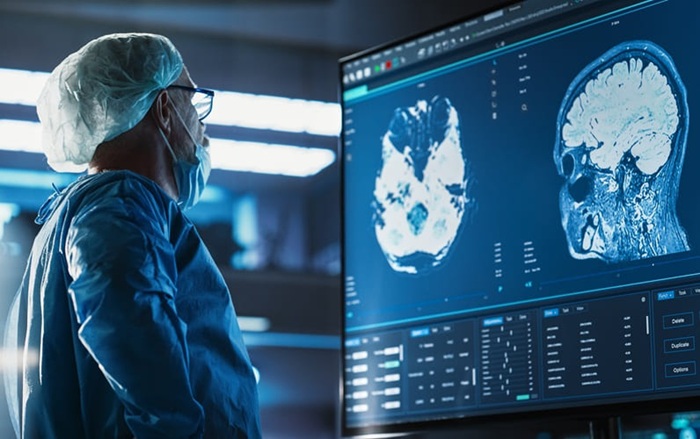AI-Powered Imaging System Improves Lung Cancer Diagnosis
Posted on 02 Apr 2025
Given the need to detect lung cancer at earlier stages, there is an increasing need for a definitive diagnostic pathway for patients with suspicious pulmonary nodules. However, obtaining tissue samples from deep within the lungs to confirm a diagnosis and create an effective treatment plan presents numerous challenges, even for the most experienced bronchoscopists. Due to CT-to-Body divergence — the difference between the preoperative CT location of a lesion and its actual location during bronchoscopy — the likelihood of acquiring a diagnostic tissue sample via bronchoscopy rarely exceeds 70%. This procedure requires not only expertise but also consistent accuracy within the dynamic environment of the human lung. Now, a new artificial intelligence (AI)-driven imaging technology offers real-time, high-precision navigation for biopsies and the delivery of localized therapies to pulmonary nodules. This advanced imaging system holds the potential to improve diagnostic accuracy and enhance the precision of localized treatments.
Body Vision Medical’s (Waltham, MA, USA) LungVision is an AI-powered advanced imaging system that transforms any 2D C-arm into an advanced 3D imaging system with sophisticated navigation capabilities. This technology enables pulmonologists and thoracic surgeons to obtain real-time, intraoperative imaging, allowing them to accurately locate and biopsy small lung lesions with greater precision and confidence. Body Vision’s real-time imaging technology offers significant opportunities, particularly in improving early cancer detection and ultimately boosting lung cancer survival rates. Previously, physicians had to choose between digital tomosynthesis, which is cost-effective but offers poor image quality, and cone-beam CT systems, which provide high-quality images but come with high costs and substantial radiation exposure. With Body Vision’s proprietary AI Tomo technology, LungVision delivers 3D imaging that matches cone-beam CT quality while minimizing both radiation exposure and cost.

Body Vision’s proprietary AI Tomo technology corrects for CT-to-Body divergence, and a visual Tool-in-Lesion confirmation significantly increases clinician confidence, achieving diagnostic yields approaching 95%. Fluoroscopy, augmented with an overlay of the actual lesion location (instead of just a virtual target), enables precise image-guided navigation and biopsy. The AI Tomo technology represents a major advancement in imaging, enabling imaging of comparable, if not superior, quality at a lower dose than a 3D C-arm, especially for sub-centimeter and sub-solid lesions. LungVision can be easily integrated with 2D and 3D C-arms, navigation platforms, bronchoscopes (including robotic systems), and biopsy tools. The advanced imaging system has received regulatory approval from the Therapeutic Goods Administration (TGA) in Australia, marking a significant step forward in Body Vision’s mission to enhance early and accurate lung cancer diagnosis globally.
Related Links:
Body Vision Medical




 Guided Devices.jpg)









